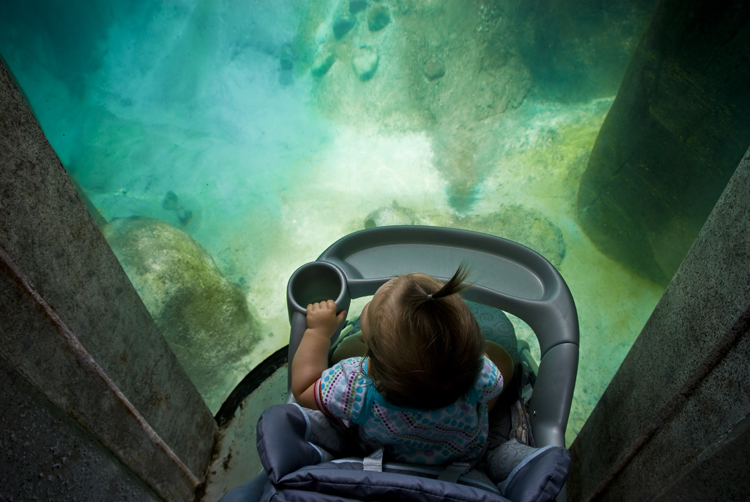
I run into a lot of photogs who flinch anytime you mention the word “RAW”. The idea of shooting in the RAW format is so foreign, that many don’t even bother learning what it is, much less how to use it. And it shouldn’t be. JPEG and RAW both have their place in a photographer’s arsenal. Either way, we should know the difference between the two, and choose the best format for our personal style of shooting. It isn’t rocket science we’re talking about here. So don’t be scared. Lets take a brief look at the two main formats for recording images.
JPEG and RAW are the two main formats to shoot in. A JPEG is a file format that is very universal. Most software programs, computers, print labs, etc. are able to readily read and use a JPEG. A vast majority of people shoot in this format. And for good reason. When shot in JPEG mode, the camera takes the a large amount of data and applies certain levels of contrast, saturation, color hue, and sharpness to the data. This is determined by which color mode (or style) the camera is set in - known as standard, neutral, portrait, vivid, monochrome etc. Once it applies these levels, the camera then compresses the data into a JPEG file. The CAMERA processes the image. Little else is needed to be done.
A RAW file is just that - raw. Whenever an image is captured in RAW mode, the camera records all the raw data and that’s it. It is unprocessed and uncompressed. The camera has not been allowed to process the data, so you get everything recorded. The size of a RAW file is much larger than a JPEG file. A RAW file is unique to the brand and model of the camera which took the image, and therefore is not universal. Most software programs, computers, print labs, etc. are not able to readily read and use a RAW file. And, you guessed it, a RAW file still needs to be processed. If you shoot in RAW, you will have to apply contrast, saturation, color, sharpness, etc. to the data and convert it to JPEG in a computer in order to be able to use it. You get much more out of a raw file, but you have more work to do after the picture is taken. YOU process the image, not the camera.
So what’s the big deal? There are pros and cons to shooting in either format. Shooting in JPEG gives you the ability to take the image straight out of the camera and print it, email it, look at it on your TV etc. Outside of tweaking it in photoshop, once you’ve shot it, you’re done. The downside however, JPEGs tend to lack the detail and sharpness a RAW file can have. JPEGs also lack dynamic range, meaning they are limited in the amount of detail that can be recorded in the highlights and Shadows. And there is less latitude in correcting exposure and sharpness. Though they are easier to use, JPEGs are limited in image quality.
Raw files give you a ton of usable data to work with. Shooting in RAW allows you to pull the most amount of detail possible out of a file. And you gain a bit more sharpness as well. The dynamic range of a RAW file is huge, allowing you to capture more detail in the highlights and shadows. And the latitude you get can save your backside when your exposure is off. The downside is you have to do some work after shooting. You still have to load them into the computer and process them. But the amount of control you get may be worth it to you. The image quality is far superior to a JPEG.
Once I got over my fears of shooting in RAW and began to learn how to process the files, I quickly saw the advantage of the format. I can get much more out of my camera shooting RAW files. I’m so spoiled on this, I shoot everything in RAW. Even playing around the house with my 19 month old daughter. Now that I know what RAW gives me, I simply no longer like what my camera produces in JPEG. Its kinda like comparing a Lean Cuisine diner to a home made diner using fresh (raw) ingredients. One is easy and ready to go, the other take some time and effort. One is ready to heat up and eat, but the other tastes so much better when you eat it. And besides, after putting in the effort to optimize my post processing workflow, I only spend a minute or two on each image. Sometimes much less than that. I’m aware every camera shoots differently. Some produce better JPEGs than others. But one consensus across the industry is, no matter how good your JPEGs look, you can still get more out of an image from shooting RAW and processing it yourself.
So who wins? Which should you shoot? Well it comes down to a personal decision. I know several pros out there who shoot mainly JPEG. Others, like myself, forget our cameras even offer JPEG, and shoot exclusively in RAW. I also know hobbyists who shoot everything in RAW because of the amount of control it gives them, while others leave it in JPEG. To each his own. But if you aren’t aware of what RAW files are able to give you, or you’re scared to try it out, you owe it to yourself to at least give it a try. To help the transition, I shot RAW + JPEG for a few months. That way every frame I shot, I got a RAW file to learn with, and a JPEG incase I “screwed the thing up.”
Now, go out and shoot something!

No comments:
Post a Comment